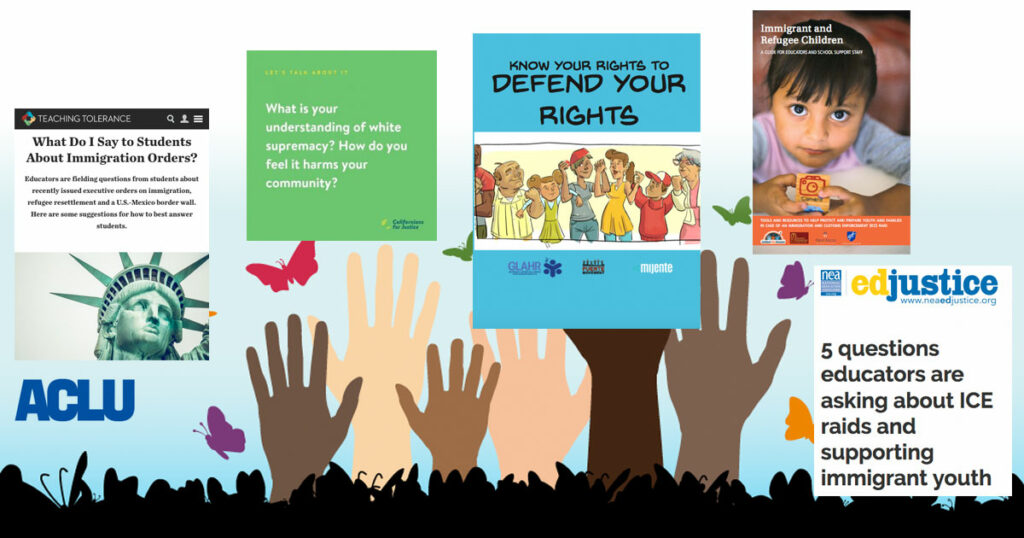Blog
Immigrant Students are Under Threat. Here are Tools to Stand Up and Fight Back.

As students head back to school this fall, the Schott Foundation stands in solidarity with students, their families and immigrant communities.
In 1982, the U.S. Supreme Court ruled in Plyler v. Doe that undocumented children have a constitutional right to receive a free public K-12 education, stating that it provides the means to becoming a “self-reliant and self-sufficient participant in society,” and instills the “fundamental values necessary to the maintenance of a democratic political system.”
However, escalating threats and increased enforcement measures by the Trump Administration’s Department of Homeland Security threaten that right for thousands of undocumented youth and the 4.1 million U.S.-born children who live in mixed-status households with at least one parent or family member who is undocumented.
Especially following recent ICE raids across the country, students, families and entire communities are fearful. Parents have been taken away from their children, leaving students devastated and without family members.
Supporting immigrant students and their families is a responsibility we all bear—but it can seem a daunting task. Below are resources and tools from our partners and other organizations that should prove helpful in understanding, educating and organizing:
An FAQ by the American Civil Liberties Union provides guidance to help educators protect children. They note that arrests within schools are not likely, but there have been ones very near schools. “ICE and CBP maintain a policy which provides that they will not engage in immigration enforcement in sensitive locations like schools absent prior approval by a supervisor or exigent circumstances. This policy has recently been reaffirmed by the Department of Homeland Security. This means that ICE and CBP generally will not arrest, interview, search, or surveil a person for immigration enforcement purposes while at a school, a known school bus stop, or an educational activity.”
See the full report here
The National Education Association urges educators, parents and community organizations to seek passage of Safe Zones resolutions by their school boards to clarify ICE accountability measures in and around school grounds. The NEA’s FAQ helps provide guidelines for teachers to safely and effective advocate for immigrant students’ rights.
Read it here [Word format]
The National immigration Law Center’s report Immigrant and Refugee Children — A Guide for Educators and School Support Staff provides information and materials teachers can use to assist students and their families.
Download the report here
The Brighton Park Neighborhood Council, a community-based organization in a Chicago neighborhood that is 93% Latinx, released a detailed deportation safety plan and an extensive know-your-rights toolkit to aid families.
Learn more and download them here
Teaching Tolerance urges teachers and counselors to use their voice—and mobilize other students—to help address immigrant students’ anxieties and fears.
Learn more here
Groups like Californians for Justice are organizing to encourage allies to recognize their power and influence to push back against the tide of anti-immigrant rhetoric and policies, to take stronger roles as accomplices. Their slogan: “Dare to lean on love, power and strength in spite of fear.”
Learn how to start important conversations here
National Center for Responsive Philanthropy highlights that many more foundations have started to support and resource the broad pro-immigrant movement, but notes that much work needs to be done to direct funds to regions where threats to immigrants are highest. If you are a funder, your next steps are clear: move resources to those most impacted and those who are organizing on the front lines.
Read more here
Are there additional resources we should highlight? Tweet them to us at @SchottFound and we’ll add to this list!


